
Self
In his short, enigmatic life, Andy Kaufman entertained and transfixed audiences while simultaneously driving them away. His work dissolved the boundaries separating reality from fiction, and his commitment to performance, both on stage and off, rendered any distinctions between his characters and his real life useless. Was he a comic, an affable sit-com star, a washed-up lounge singer, a bus boy, a professional wrestler, a hoaxer, a provocateur or a pest? Nearly 40 years after his supposed death, one question still puzzles fans and haters alike: “was that for real?” Thank You Very Much is the definitive documentary look at how a shy, oddball kid from Long Island, New York, became the most polarizing performance artist of the 20th century.

Director
Laurie Anderson presents Spending the War Without You: Virtual Backgrounds. The City is the fifth in a series of six lectures, looking at the challenges we face as artists and citizens as we reinvent our culture with ambiguity and beauty. This talk will consider teachers, activism and politics.

Director
Laurie Anderson presents Spending the War Without You: Virtual Backgrounds. The Road is the fourth in a series of six lectures, looking at the challenges we face as artists and citizens as we reinvent our culture with ambiguity and beauty. The talk will consider technology, media hypnosis, radio, speed and invention.

Narrator (voice)
Think of early electronic music and you’ll likely see men pushing buttons, knobs, and boundaries. While electronic music is often perceived as a boys' club, the truth is that from the very beginning women have been integral in inventing the devices, techniques and tropes that would define the shape of sound for years to come.

Director
Laurie Anderson presents Spending the War Without You: Virtual Backgrounds. Rocks is the third in a series of six lectures, looking at the challenges we face as artists and citizens as we reinvent our culture with ambiguity and beauty. The talk will consider language, lyrics and the narrator.

Director
Laurie Anderson presents Spending the War Without You: Virtual Backgrounds. The Forest is the second in a series of six lectures, looking at the challenges we face as artists and citizens as we reinvent our culture with ambiguity and beauty. This talk will consider place – visual and spatial sound.

Director
Laurie Anderson presents, Spending the War Without You: Virtual Backgrounds. The River is the first in a series of six lectures, looking at the challenges we face as artists and citizens as we reinvent our culture with ambiguity and beauty. The talk will consider spending time in the slowdown – time in music and stories.

Herself (voice)
"Symphony of the Invisible" is a reflection on creation and how through art, poetry and images you can break the limits that have been imposed on language and life itself.

Self
An oral history of Artists Space, the legendary New York artists organization. Told through the voices of the artists, critics and curators who formed it, the film is narrated by voiceover culled from 30 hours of archival cassette tape interviews over a 45 year period. Artists such as Laurie Anderson, Mike Kelley, Hito Steyerl and David Wojnarowicz walk us through the decades. A formally-experimental and raucously-told chronology composed of rare archival documentation, The Business of Thought... is a reminder of the radical potential of the arts and the importance of collective, cultural spaces.

Herself
Each and every year hundreds of people flock to New Bedford, MA in bleak mid-winter to partake in a celebration like none other. They read this single book out loud over the course of two full days without stopping. All of these people have one thing in common: they are obsessed with Moby Dick, the book that most call the Great American Novel.
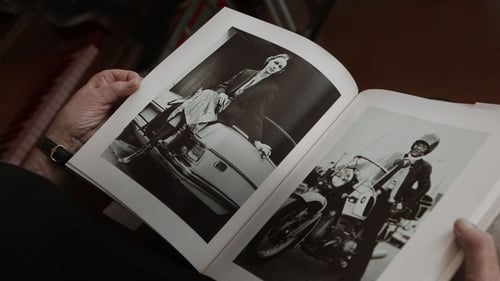
Self
A partir de fotos dos anos 70 que captaram o despertar do feminismo, o filme mergulha na vida das mulheres retratadas e explora a permanente necessidade de mudança.

Self
A chronicle of the personal life and public career of the celebrated artist and filmmaker Julian Schnabel.

Self (archive footage)
When Howard Brookner lost his life to AIDS in 1989, the 35-year-old director had completed two feature documentaries and was in post-production on his narrative debut, Bloodhounds of Broadway. Twenty-five years later, his nephew, Aaron, sets out on a quest to find the lost negative of Burroughs: The Movie, his uncle's critically-acclaimed portrait of legendary author William S. Burroughs. When Aaron uncovers Howard's extensive archive in Burroughs’ bunker, it not only revives the film for a new generation, but also opens a vibrant window on New York City’s creative culture from the 1970s and ‘80s, and inspires a wide-ranging exploration of his beloved uncle's legacy.

Yoko Ono Lennon's Courage Awards 2016
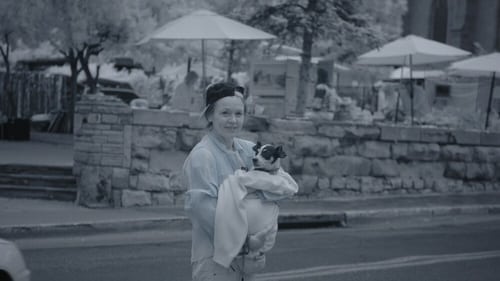
Camera Operator
Centrado na cachorra Lolabelle, que morreu em 2011 e era muito querida pela diretora, o filme é um ensaio pessoal que combina lembranças de infância, diários em vídeo, reflexões sobre dados, cultura de vigilância e a visão budista sobre a morte, além de tributos a artistas, escritores, músicos e pensadores. Numa espécie de colagem visual, o filme examina como histórias são construídas e contadas —e como as usamos para dar sentido às nossas vidas.

Animation
Centrado na cachorra Lolabelle, que morreu em 2011 e era muito querida pela diretora, o filme é um ensaio pessoal que combina lembranças de infância, diários em vídeo, reflexões sobre dados, cultura de vigilância e a visão budista sobre a morte, além de tributos a artistas, escritores, músicos e pensadores. Numa espécie de colagem visual, o filme examina como histórias são construídas e contadas —e como as usamos para dar sentido às nossas vidas.

Draughtsman
Centrado na cachorra Lolabelle, que morreu em 2011 e era muito querida pela diretora, o filme é um ensaio pessoal que combina lembranças de infância, diários em vídeo, reflexões sobre dados, cultura de vigilância e a visão budista sobre a morte, além de tributos a artistas, escritores, músicos e pensadores. Numa espécie de colagem visual, o filme examina como histórias são construídas e contadas —e como as usamos para dar sentido às nossas vidas.

Producer
Centrado na cachorra Lolabelle, que morreu em 2011 e era muito querida pela diretora, o filme é um ensaio pessoal que combina lembranças de infância, diários em vídeo, reflexões sobre dados, cultura de vigilância e a visão budista sobre a morte, além de tributos a artistas, escritores, músicos e pensadores. Numa espécie de colagem visual, o filme examina como histórias são construídas e contadas —e como as usamos para dar sentido às nossas vidas.

Narrator
Centrado na cachorra Lolabelle, que morreu em 2011 e era muito querida pela diretora, o filme é um ensaio pessoal que combina lembranças de infância, diários em vídeo, reflexões sobre dados, cultura de vigilância e a visão budista sobre a morte, além de tributos a artistas, escritores, músicos e pensadores. Numa espécie de colagem visual, o filme examina como histórias são construídas e contadas —e como as usamos para dar sentido às nossas vidas.

Music
Centrado na cachorra Lolabelle, que morreu em 2011 e era muito querida pela diretora, o filme é um ensaio pessoal que combina lembranças de infância, diários em vídeo, reflexões sobre dados, cultura de vigilância e a visão budista sobre a morte, além de tributos a artistas, escritores, músicos e pensadores. Numa espécie de colagem visual, o filme examina como histórias são construídas e contadas —e como as usamos para dar sentido às nossas vidas.

Writer
Centrado na cachorra Lolabelle, que morreu em 2011 e era muito querida pela diretora, o filme é um ensaio pessoal que combina lembranças de infância, diários em vídeo, reflexões sobre dados, cultura de vigilância e a visão budista sobre a morte, além de tributos a artistas, escritores, músicos e pensadores. Numa espécie de colagem visual, o filme examina como histórias são construídas e contadas —e como as usamos para dar sentido às nossas vidas.

Director
Centrado na cachorra Lolabelle, que morreu em 2011 e era muito querida pela diretora, o filme é um ensaio pessoal que combina lembranças de infância, diários em vídeo, reflexões sobre dados, cultura de vigilância e a visão budista sobre a morte, além de tributos a artistas, escritores, músicos e pensadores. Numa espécie de colagem visual, o filme examina como histórias são construídas e contadas —e como as usamos para dar sentido às nossas vidas.

Herself
This addition to the acclaimed & award winning Classic Albums series tells the story behind the making of Peter Gabriel's 1986 album "So". It was Gabriel's fifth solo album and the first one to have a title (the others all having just been called "Peter Gabriel" ). The album spawned a number of hit singles on both sides of the Atlantic including "Sledgehammer", "Big Time", "Don't Give Up" (a duet with Kate Bush) and "In Your Eyes" which drove "So" to multi-platinum sales, the No.1 spot in the UK and No.2 in the US. So was very much an album of the MTV generation and the distinctive videos for tracks like "Sledgehammer", "Red Rain", "Big Time" and "Don't Give Up" were key factors in the album's success.

Self
A captivating history of the nation's oldest performing arts center - which largely mirrors the evolution of experimental and progressive performing arts in 20th century America - BAM150 chronicles the vibrant past, present and future of the Brooklyn Academy of Music. Through footage of recent performances, intimate interviews, and an astonishing treasure trove of 150 years' worth of archival materials, BAM150 is a testament to the power and stamina of the institution that established Brooklyn as a cultural mecca-serving as a home to such greats as Enrico Caruso, Sarah Bernhardt, Edwin Booth, Merce Cunningham, Robert Wilson, Mark Morris, Laurie Anderson, and Pina Bausch.

Documentary, Science and Nature Documentaries, Miscellaneous Documentaries - Launched in 2008, Brainwave pairs celebrities from many walks of life; actors, musicians, comedians, choreographers, filmmakers, artists, and authors, with leading neuroscientists and other experts to explore how the human mind works.

Self
A riveting and emotional journey into the world of writer William S. Burroughs, a man considered as cold as an iceberg on a winter night.

The story of music and the music industry told through interviews with musicians, composers and producers across genres.

A distilled, up-to-the-minute portrait of our agitated nation, its politics, its economics, its delusions and its dreams. Laurie Anderson's tone is less outraged than elegiac, mourning for lives lost, ideals misplaced. The music is dramatically stripped down to a handful of players, centered around Anderson's haunting violin and voice, frequent Bill Frisell band-mate Eyvind Kang's viola and Peter Scherer's keyboards.

Recorded in 2008, direct from the Knitting Factory stage in downtown Manhattan. This The McGarrigle Christmas Hour features Kate & Anna McGarrigle, Rufus & Martha Wainwright, Emmylou Harris, Lou Reed and Laurie Anderson among others
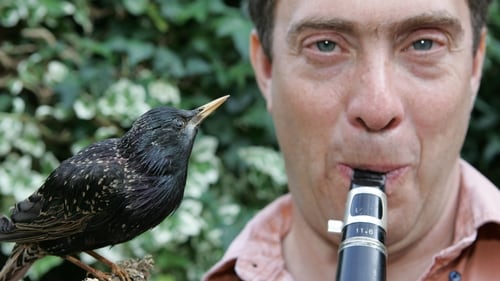
Herself
Inspired by musician and eco-philosopher David Rothenberg's book of the same title, this documentary explores the intriguing, charming, complex and often conflicting theories on why birds sing like they do and why humans are so attracted to the sound. The film features contributions from musicians including Laurie Anderson, Jarvis Cocker and Beth Orton; enlightening and often startling analysis from some of the world's most eminent birdsong scientists; a literary guide to birdsong in poetry; a bizarre birdsong-themed art 'happening'; the creation of a new musical composition from the Afro-Celt Sound System, entirely made up of manipulated birdsongs; and a strange musical duet at New York's Bronx Aviary, featuring humans and birds.

Narrator
Ric Burns unearths rarely seen footage and offers keen observations on the life and artistic influence of Andy Warhol. [Made for and aired on PBS's American Masters series.]

John Peel's Record Box is a documentary film made by Elaine Shepherd, released on 14 November 2005 on Channel 4. It was nominated for Primetime Emmy Award. It is about a small private collection of the British radio DJ John Peel who died in 2004 at the age of 65. Peel's main archive contained more than 100,000 vinyl records and CDs. This smaller private collection, however, contains 143 singles - some of them doublettes - stored in a private wooden box representing some of his personal favourites. According to the documentary, there are no singles by Peel's favorite group, The Fall, because he kept them in a separate box. The film features interviews with John's wife Sheila Ravenscroft, radio DJs and artists like Mary Anne Hobbs, Sir Elton John, Ronnie Wood, Roger Daltrey, Fergal Sharkey, Jack White, Michael Palin and Miki Berenyi.

Narrator
A fascinating clash of philosophy, classical studies and Pop Culture, this film capsulizes a number of "Media Prophet" Marshall McLuhan's conclusions about media.

Self
Featuring inverviews from: Afrika Bambaataa, Ashford & Simpson, Jackson Browne, Kim Burell, Taylor Dayne, Carmen Electra, Faith Evans, Roberta Flack, Joel Gray, Kc & the Sunshine Band, Eartha Kitt, Patti Labelle, Queen Latifah and more?
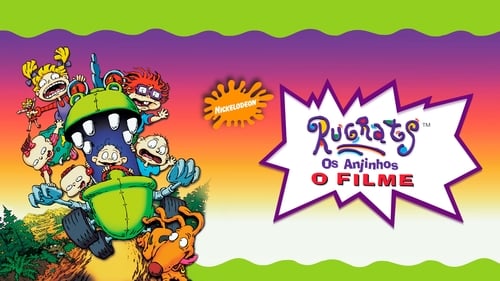
Newborn Baby (singing voice)
Tommy ganha um irmão, o pequeno Dil, que logo passa a receber todos os afagos e atenção de seus pais e de seus amigos. Enciumado com a nova situação, Tommy, motivado pelos conselhos de Angélica, decide devolver Dil para o lugar de onde veio: o hospital. Os amigos de Tommy descobrem o plano e resolvem fazer de tudo para impedir que Dil vá embora. Porém, eles terminam indo para bem longe de seus pais e se perdendo em plena floresta, onde precisarão enfrentar seus próprios medos para conseguir retornar a seus lares.

Herself
The Sensual Nature of Sound portrays four New York based composers and performers in terms of their musical lives and artistic passion. Though Laurie Anderson, Tania Leon, Meredith Monk and Pauline Oliveros are all pioneers in American music, each composer pursues a distinct direction of her own. Their rehearsals and performances show a common pursuit of lyrical storytelling through which a new set of contemporary narratives has been forged. Through body, sound, movement and composition, these women have forged their own path through the wild world of modern music.

Music
This is the story of Spalding Gray and his attempt to write a novel. It is a first person account about writing and living, and dealing with success while trying to be successful.

Since its inception, performance art provided a forum for those artists whose work challenges the dominant aesthetic and cultural status quo. In "Sphinxes Without Secrets", performers, curators and critics unravel the mysteries of performance art and ponder the world women confront today.

Featuring The Videos : Beautiful Red Dress / Language Is A Virus / Sharkey's Day / O Superman - Including Excerpts From : What You Mean We / Alive From Off Center / The Eleventh Hour - Plus Never Before Seen Live Footage - Interview Footage - And More...

Presenter
A highly innovative arts documentary, which uses the latest special effects, to investigate the cultural and scientific background behind the way we judge people by their face. The documentary was presented by US artist and musician, Laurie Anderson whose face was transformed into iconic and historic stereotypes as she talked. Special effects were created by Christopher Tucker.

Director
Anderson’s Carmen, who works in a tobacco factory, is as strong-willed and carefree as the original (she steals cigarettes off the assembly line). The one significant difference in that she is married. The young soldier from Georges Bizet’s original opera (1875) has been transformed into her indifferent husband who sits home idly watching television with the kids while she works.

Self
This 56-minute documentary on America's most controversial and unique composer manages to cover a great many aspects of Cage's work and thought. His love for mushrooms, his Zen beliefs and use of the I Ching, and basic bio details are all explained intelligently and dynamically. Black Mountain, Buckminster Fuller, Rauschenberg, Duchamp are mentioned. Yoko Ono, John Rockwell, Laurie Anderson, Richard Kostelanetz make appearances. Fascinating performance sequences include Margaret Leng-Tan performing on prepared piano, Merce Cunningham and company, and performances of Credo In Us, Water Music, and Third Construction. Demystifies the man who made music from silence, from all sounds, from life.

Self
Celebrities and creatives -- including musician David Byrne, performance artist Spalding Gray, comedian Sandra Bernhard, radical activist Abbie Hoffman, and poet Allen Ginsberg-- recall their earliest sexual experiences.

Producer
At the '87 Tokyo International Video Biennale, held at Spiral Hall, performance artist Laurie Anderson gave the unforgettable lecture-demonstration, "Talk Normal". In "Talk Normal", Anderson discusses the many elements that distinguish her work, from the unique violins that serve as her alter egos, to her video clone, to her experiments with electronics and her personal homage to Oscar Schlemmer's Bauhaus dances. Through excerpts from the film Home of the Brave, the television program What You Mean We?, and the music videos for her songs O Superman and Sharkey's Day, Anderson draws you into an eclectic world where sight and sound are united. In "Talk Normal", New York's best known performance artist talks about herself.

Writer
At the '87 Tokyo International Video Biennale, held at Spiral Hall, performance artist Laurie Anderson gave the unforgettable lecture-demonstration, "Talk Normal". In "Talk Normal", Anderson discusses the many elements that distinguish her work, from the unique violins that serve as her alter egos, to her video clone, to her experiments with electronics and her personal homage to Oscar Schlemmer's Bauhaus dances. Through excerpts from the film Home of the Brave, the television program What You Mean We?, and the music videos for her songs O Superman and Sharkey's Day, Anderson draws you into an eclectic world where sight and sound are united. In "Talk Normal", New York's best known performance artist talks about herself.

Herself
At the '87 Tokyo International Video Biennale, held at Spiral Hall, performance artist Laurie Anderson gave the unforgettable lecture-demonstration, "Talk Normal". In "Talk Normal", Anderson discusses the many elements that distinguish her work, from the unique violins that serve as her alter egos, to her video clone, to her experiments with electronics and her personal homage to Oscar Schlemmer's Bauhaus dances. Through excerpts from the film Home of the Brave, the television program What You Mean We?, and the music videos for her songs O Superman and Sharkey's Day, Anderson draws you into an eclectic world where sight and sound are united. In "Talk Normal", New York's best known performance artist talks about herself.

Music
Spalding Gray sits behind a desk throughout the entire film and recounts his exploits and chance encounters while playing a minor role in the film 'The Killing Fields'. At the same time, he gives a background to the events occurring in Cambodia at the time the film was set.

Original Music Composer
A rotineira vida de Charles Driggs (Jeff Daniels), um executivo, sofre uma brusca mudança quando, se vendo sem dinheiro, tenta sair de um restaurante sem pagar. Charles é flagrado por Lulu (Melanie Griffith), uma mulher sexy e totalmente desinibida. Charles então entende que ela não trabalha no restaurante e, deste modo, aceita uma carona para o seu escritório. Entretanto Lulu pega um trajeto contrário e o leva para uma viagem, fazendo-o Charles deixar sua vidinha. Fazendo se passar por casados, Charles e Audrey, que é o verdadeiro nome de Lulu, visitam a mãe dela e também vão a uma reunião escolar da turma de 76, da qual Audrey fazia parte. Nesta reunião eles encontram Ray Sinclair (Ray Liotta), o ex-marido de Audrey, um homem violento que foi libertado recentemente. Quando Ray deixa claro que quer Audrey de volta, os problemas realmente começam.

Writer
WHAT YOU MEAN WE is a surreal short film by experimental artist Laurie Anderson.

Director
WHAT YOU MEAN WE is a surreal short film by experimental artist Laurie Anderson.

Herself
WHAT YOU MEAN WE is a surreal short film by experimental artist Laurie Anderson.

Music
Two Moon July was a multidisciplinary event that featured experimental video, film, visual art, performance and music in a theatrical framework. More than thirty artists participated in the program, which was produced for the Kitchen by Carlota Schoolman and directed by Tom Bowes.

Two Moon July was a multidisciplinary event that featured experimental video, film, visual art, performance and music in a theatrical framework. More than thirty artists participated in the program, which was produced for the Kitchen by Carlota Schoolman and directed by Tom Bowes.
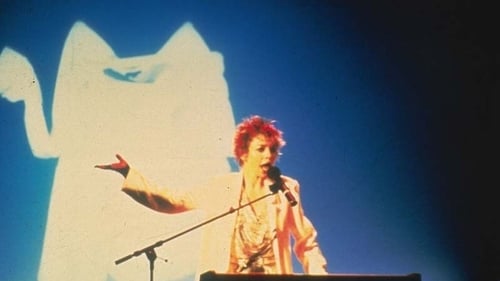
Music Producer
A concert film directed by and featuring the music of Laurie Anderson, filmed at the Park Theater in Union City, New Jersey, during the summer of 1985.

Visual Effects
A concert film directed by and featuring the music of Laurie Anderson, filmed at the Park Theater in Union City, New Jersey, during the summer of 1985.

Writer
A concert film directed by and featuring the music of Laurie Anderson, filmed at the Park Theater in Union City, New Jersey, during the summer of 1985.

Self - Keyboards, Vocals / Fenway Bergamot / The Voice of Reason
A concert film directed by and featuring the music of Laurie Anderson, filmed at the Park Theater in Union City, New Jersey, during the summer of 1985.

Director
A concert film directed by and featuring the music of Laurie Anderson, filmed at the Park Theater in Union City, New Jersey, during the summer of 1985.

Self (archive footage)
A compilation of avant-garde artwork and talent of the mid to late 20th century hosted by Ryuichi Sakamoto.

Self (archive footage)
In his book "1984", George Orwell saw the television of the future as a control instrument in the hands of Big Brother. Right at the start of the much-anticipated Orwellian year, Paik and Co. were keen to demonstrate satellite TV's ability to serve positive ends-- Namely, the intercontinental exchange of culture, combining both highbrow and entertainment elements. A live broadcast shared between WNET TV in New York and the Centre Pompidou in Paris, linked up with broadcasters in Germany and South Korea, reached a worldwide audience of over 10 or even 25 million (including the later repeat transmissions).

Music
Premiere performance of Set and Reset at the Brooklyn Academy of Music, Brooklyn, New York, USA, 21 October 1983
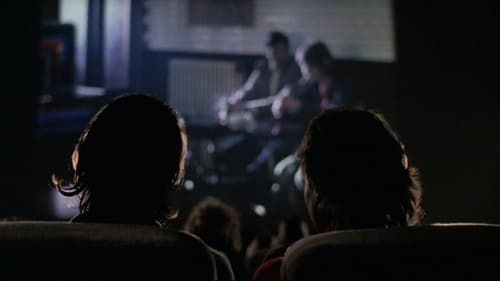
Sängerin
Computer operator Faber works on securing computers for big companies and banks. His private life is rather dull until he meets a strange women, Juliet and falls in love. Her friend convinces Faber to exploit his knowledge to rob a bank.

Music
Impressions of New York City. Experimental short.

Herself
The multiple means of making art after the end of illusionism led these artists to create performances, sculptures, earthworks, tableaux, furniture, shaped canvases, and more, using unusual materials. They explore the process of making forms and giving meanings to those forms. In this idea art, their focus is as often social and psychological as artistic. Some of their activities enlist engineering and construction techniques, others compose texts or scripts that are central to their art. Some cast the viewer in the role of a spectator, while the others demand active participation. The sources for their concepts and art works are equally diverse; the delicate proportions and balance of Early Renaissance painting, the exploration of the surface of the moon, the structure and inventions of vernacular architects, to name only a few.

Director
This performance consists of ten songs in which music, language and images are equally important. In most of these songs, Anderson plays the violin, accompanied by her own singing and an audiotape (with spoken text, more singing or more violin music). Her songs are often combined with a film projection: she is framed by the light from the projection, and is playing with the shadows cast by her body and her violin. Anderson makes experimental music, and she often find solutions in technological inventions, as with the song 'a man, a woman, a house and a tree'. The music for this piece is created with the help of a ‘slow-scan’ machine, which registers visual information and transforms this into sound. These experiments are not only about music, but also abou language: anagrams, play on words and poetic stories. The introductory anecdotes that Anderson tells are just as important as the song itself.

This performance consists of ten songs in which music, language and images are equally important. In most of these songs, Anderson plays the violin, accompanied by her own singing and an audiotape (with spoken text, more singing or more violin music). Her songs are often combined with a film projection: she is framed by the light from the projection, and is playing with the shadows cast by her body and her violin. Anderson makes experimental music, and she often find solutions in technological inventions, as with the song 'a man, a woman, a house and a tree'. The music for this piece is created with the help of a ‘slow-scan’ machine, which registers visual information and transforms this into sound. These experiments are not only about music, but also abou language: anagrams, play on words and poetic stories. The introductory anecdotes that Anderson tells are just as important as the song itself.

Music
This performance consists of ten songs in which music, language and images are equally important. In most of these songs, Anderson plays the violin, accompanied by her own singing and an audiotape (with spoken text, more singing or more violin music). Her songs are often combined with a film projection: she is framed by the light from the projection, and is playing with the shadows cast by her body and her violin. Anderson makes experimental music, and she often find solutions in technological inventions, as with the song 'a man, a woman, a house and a tree'. The music for this piece is created with the help of a ‘slow-scan’ machine, which registers visual information and transforms this into sound. These experiments are not only about music, but also abou language: anagrams, play on words and poetic stories. The introductory anecdotes that Anderson tells are just as important as the song itself.

Writer
This performance consists of ten songs in which music, language and images are equally important. In most of these songs, Anderson plays the violin, accompanied by her own singing and an audiotape (with spoken text, more singing or more violin music). Her songs are often combined with a film projection: she is framed by the light from the projection, and is playing with the shadows cast by her body and her violin. Anderson makes experimental music, and she often find solutions in technological inventions, as with the song 'a man, a woman, a house and a tree'. The music for this piece is created with the help of a ‘slow-scan’ machine, which registers visual information and transforms this into sound. These experiments are not only about music, but also abou language: anagrams, play on words and poetic stories. The introductory anecdotes that Anderson tells are just as important as the song itself.

















